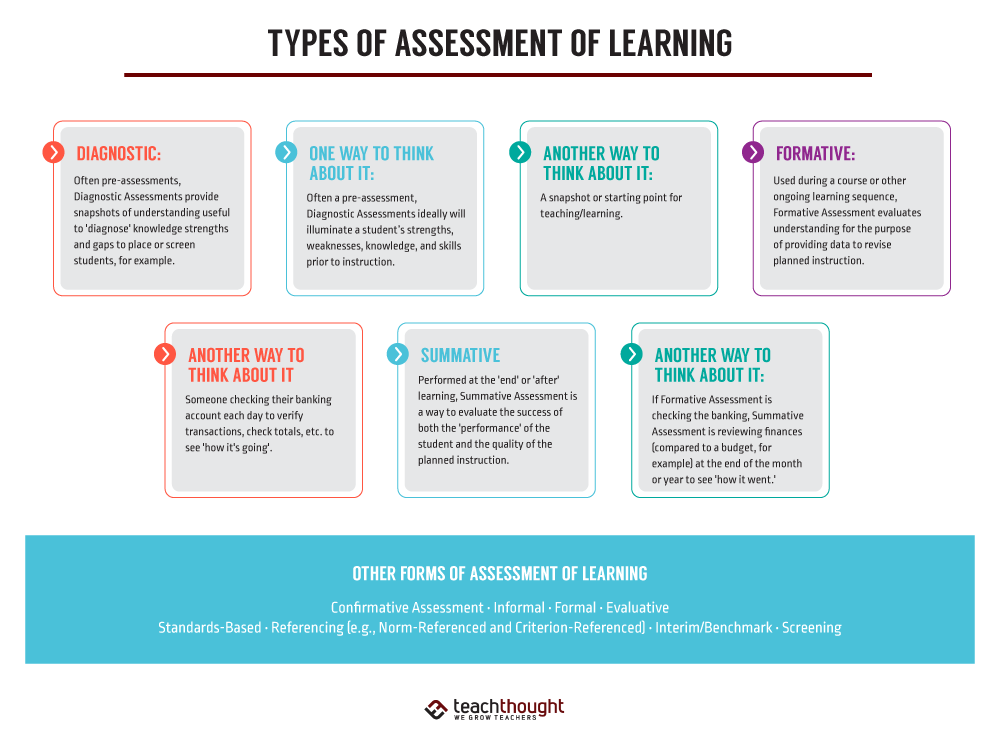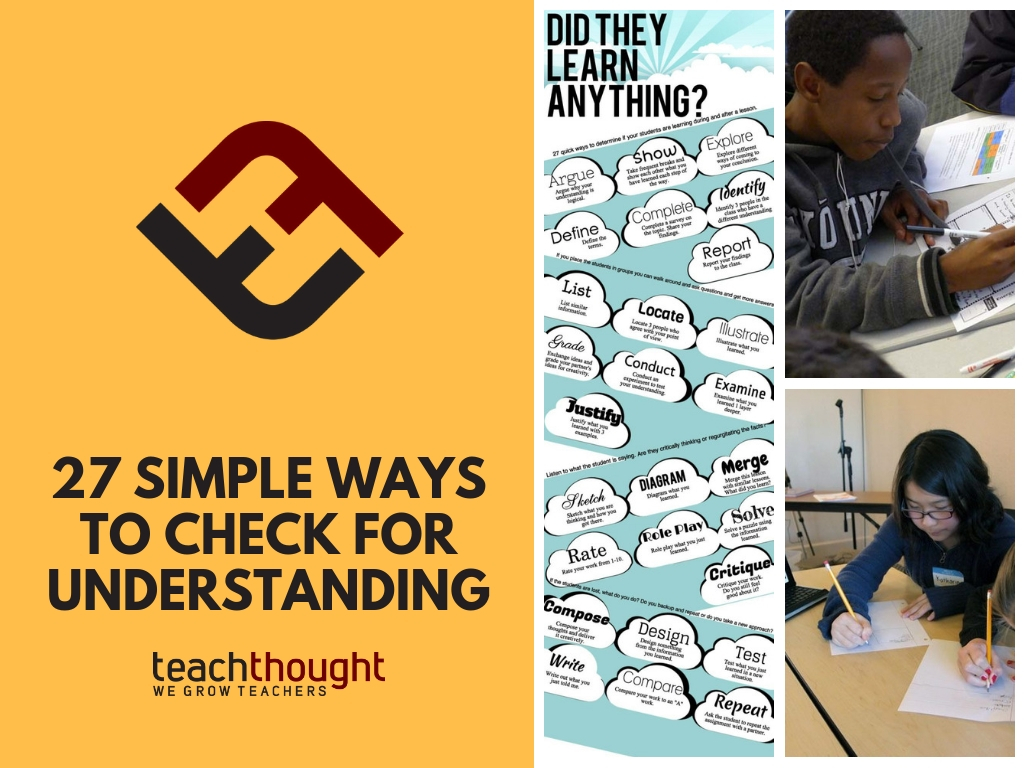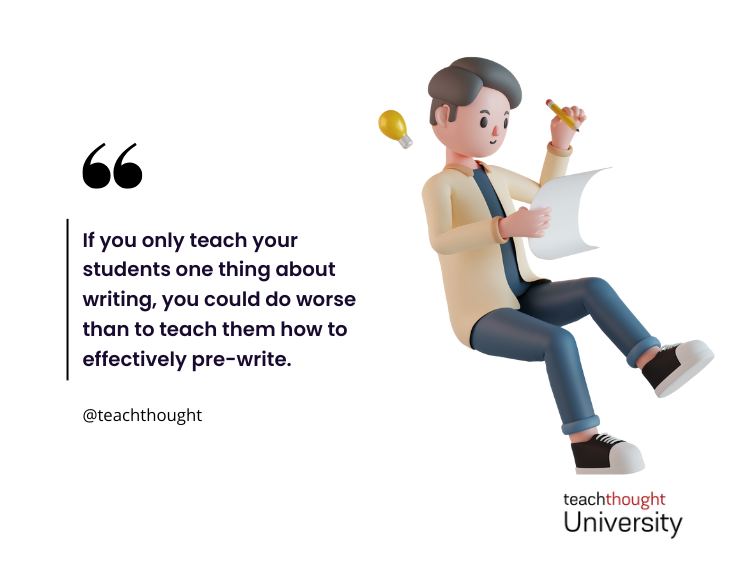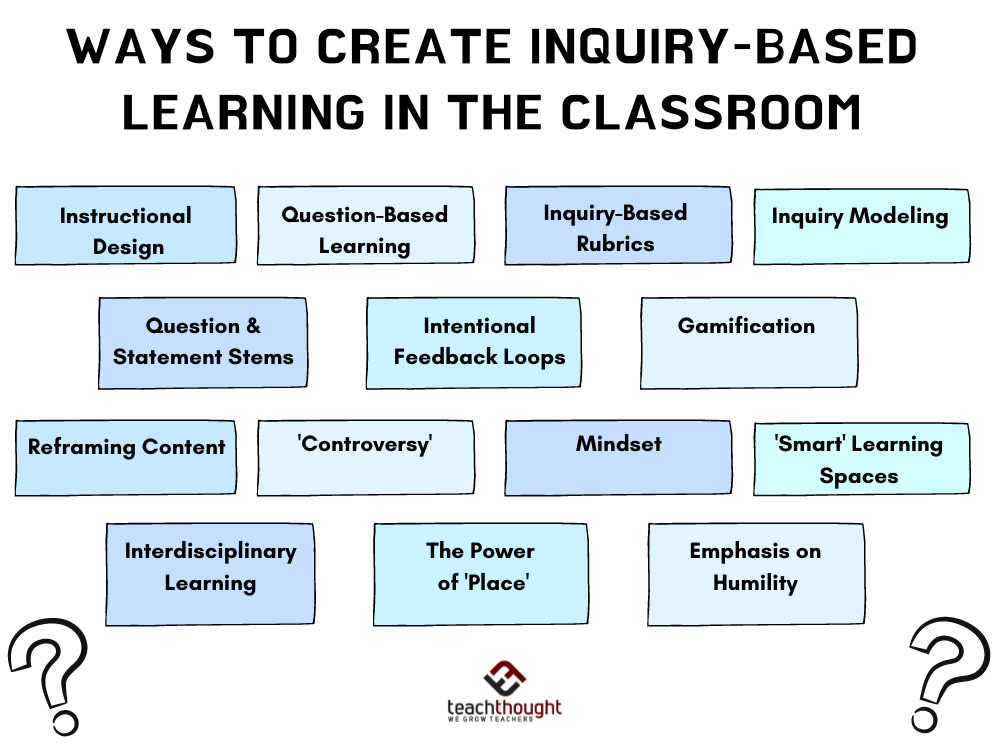
by TeachThought Staff
What are the sorts of analysis for finding out?
And more importantly, when should you make use of which? If educational program is the what of teaching and discovering designs are the exactly how , analysis is the puzzled ‘Hmmmm’– as in, I presumed this and this about trainee learning, but after providing this assessment, well …’Hmmmmm.’
In The Difference Between Evaluation Of Knowing And Evaluation For Understanding, we discussed that “analysis for understanding is typically referred to as formative evaluation– that is, assessment created to inform direction.” Listed below, we recognize sorts of analysis of discovering– very briefly, with straightforward methods to ‘consider’ each to make sure that you ideally awaken with a better grasp of each kind.
6 Types Of Evaluation Of Learning
1 Analysis Evaluation (as Pre-Assessment)
Diagnostic assessments are made use of at the beginning of a program or unit to establish pupils’ anticipation, skills, and understanding of the subject. This type of analysis aids teachers identify students’ toughness and weak points, permitting them to prepare direction that fulfills their students’ specific demands. Instances include pre-tests, studies, or initial observations.
One way to think about it: Assesses a student’s strengths, weaknesses, knowledge, and skills before instruction
An additional method to consider it: A baseline to function from
Suggestion: Done at the start– of the school year, beginning of a system, start of a lesson, etc.
See likewise What Is Project-Based Discovering?
2 Formative Assessment
Developmental evaluations are continuous processes that educators utilize to monitor pupil learning and provide feedback during direction. These assessments assist teachers change their mentor approaches to boost pupil understanding and performance. Instances include tests, course discussions, and homework tasks that inform educators about student progress.
One way to think of it: Assesses a student’s performance during instruction, and usually happens regularly throughout the instruction process
Another method to think of it : Like a medical professional’s ‘exam’ to supply information to modify direction
Suggestion: Making use of electronic exit ticket devices like Loop can be a very easy ways of checking whether trainees have actually recognized lesson content, while likewise promoting pupil representation.
3 Cumulative Evaluation
So what are the various types of evaluation of understanding? The following time someone states ‘evaluation,’ you can say “Which type, and what are we finishing with the information?” Summative analysis, as an example.
Cumulative evaluations examine student learning at the end of a training period, such as completion of an unit, training course, or academic year. These evaluations are used to establish if pupils have actually satisfied the knowing purposes and to designate qualities. Examples include last tests, end-of-term projects, and standardized examinations.
One way to think of it : Steps a student’s accomplishment at the end of guideline. It’s like talking to someone concerning a movie after the flick is over.:)
One more way to think of it: It’s macabre, yet if formative assessment is the exam, you could think of cumulative evaluation as the postmortem examination. What happened? Since it’s over, what went right and what went wrong?
Tip: Cumulative evaluations can be valuable for teachers to improve systems and lessons year over year by measuring student efficiency since they are, in such a way, as much a reflection on the quality of the systems and lessons themselves as they are on the trainees.
4 Norm-Referenced Analysis
One method to think about it: Contrasts a pupil’s performance against various other students (a national team or various other ‘standard’)
One more way to consider it : Place, team or ‘market’ assessment. Several standard examinations are made use of as norm-referenced analyses.
Suggestion: These evaluations are useful with time in student profiles or for placement in national-level programs, for example.
5 Criterion-Referenced Analysis
One means to consider it: Procedures a trainee’s efficiency versus a goal, particular goal, or common
One more means to think of it : a bar to measure all trainees against
Tip: These can be a kind of formative assessment and must be integrated throughout your curriculum to assist the change of your training over time. Mastery or competency-based knowing would utilize criterion-referenced assessments.
6 Interim/Benchmark Evaluation
One means to think about it: Reviews pupil efficiency at periodic periods, often at the end of a grading period. Can forecast pupil efficiency on end-of-the-year cumulative analyses. A benchmark evaluation is an acting evaluation so it could be valuable to think about them as distinct although they operate likewise.
One more means to think of it : Bar chart or chart development throughout a year, often against particular ‘standards’
Pointer: Standard analyses can be valuable for communicating important truths and data to moms and dads, area officials, and others. One objective is to notify the allocation of sources (money and time) to reply to that information.
6 Kinds of Analysis Of Learning
TeachThought’s goal is to advertise essential thinking and technology education and learning.




